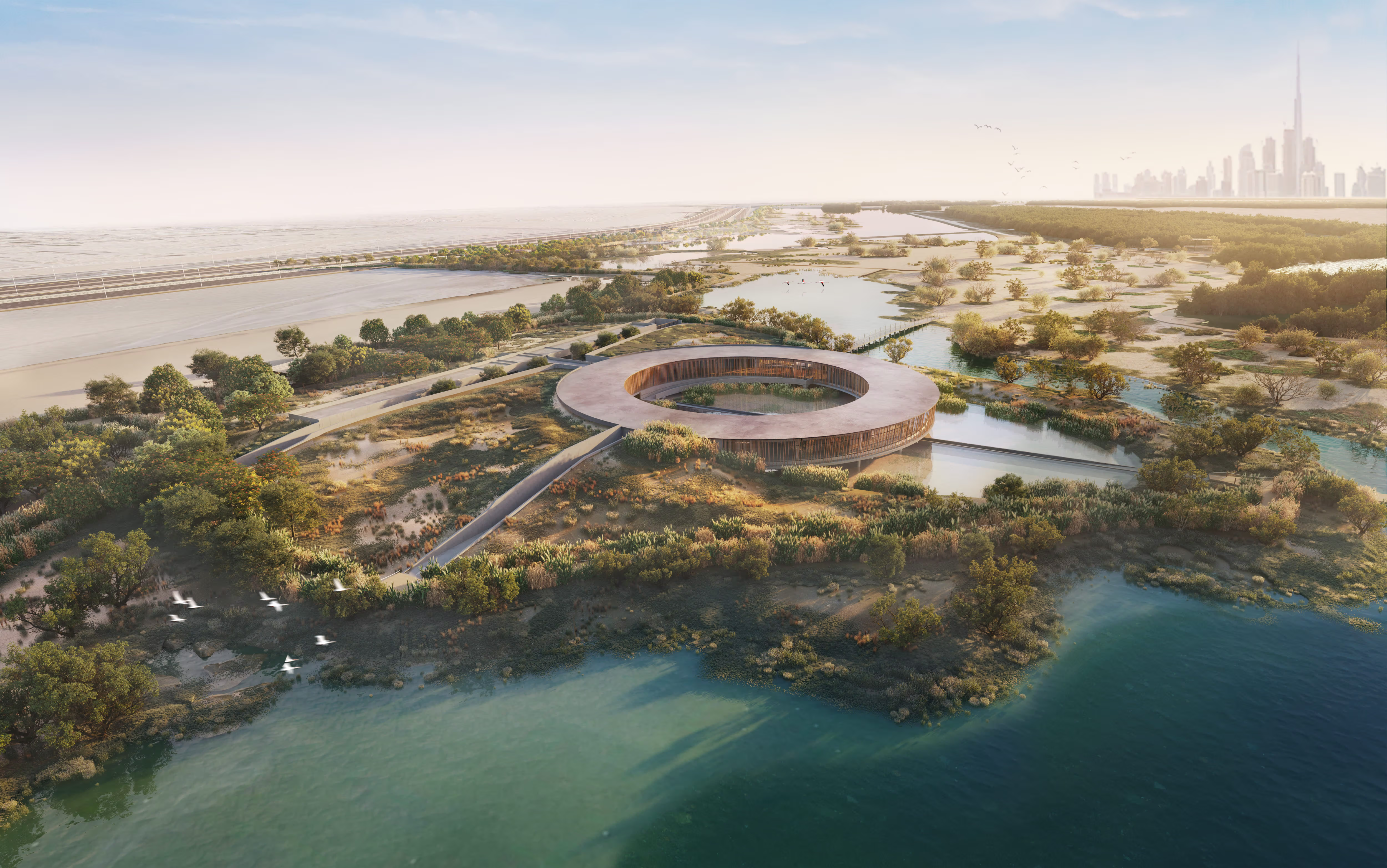In line with the directives of His Highness Sheikh Mohammed bin Rashid Al Maktoum, Vice President and Prime Minister of the UAE and Ruler of Dubai, to develop Dubai’s natural reserves in alignment with the Dubai 2040 Urban Master Plan, Dubai Municipality has announced the awarding of the contract for the first phase of the Ras Al Khor Wildlife Sanctuary Development Project at a cost of approximately AED100 million, with the overall cost across two phases of the project estimated at AED650 million.
The project aims to enhance biodiversity, preserve the sustainability of natural habitats and reinforce the sanctuary’s position as a premier sustainable eco-tourism destination offering a unique and integrated experience that further enriches quality of life for residents and visitors alike.
The development aligns with the Dubai Economic Agenda D33, especially its objective of placing Dubai among the world’s top three destinations for tourism, with the city’s exceptional quality of life and new investment opportunities that promise to boost the sanctuary’s direct economic returns offering added impetus for the initiative.
The sanctuary has been planned and designed based on the needs of both residents and tourists, aiming to deliver the best recreational and tourism experience that promotes a sense of connect with the environment while preserving the sanctuary’s natural elements.
Qualitative shift
The project, which is to be executed in two main phases, will bring about a qualitative shift in environmental sustainability in the emirate. Phase one will cover approximately 6.4 square kilometres of the sanctuary and is expected to be completed by the end of 2026.
Dubai Municipality seeks to rehabilitate and improve mangrove habitats by planting new mangroves and increasing mangrove coverage by 60%, from 40 to 65 hectares. This will include the provision of new irrigation channels, rehabilitation of mangrove forests and creating new habitats such as the mangrove lake, North Edge Lake and reed ponds. A Green Spine will also be developed, and post-rehabilitation monitoring will be conducted regularly.
Phase one also envisions a 144% increase in water bodies within the reserve, expanding their total area to 74 hectares, helping achieve major environmental benefits such as a 60% increase in carbon dioxide absorption. Additionally, 10 hectares of mudflats (salt flats) will be added, contributing to the sanctuary’s ecosystem and biodiversity.
Global model
His Excellency Eng. Marwan Ahmed bin Ghalita, Director General of Dubai Municipality, said: “The Ras Al Khor Wildlife Sanctuary Development Project is one of the most prominent environmental infrastructure initiatives being undertaken by Dubai Municipality. It enhances the appeal of Dubai’s nature reserves as unique and diverse destinations, supporting the goals of the eco-tourism sector and reinforcing Dubai’s position as the best city in the world to live, work and visit, and a global model for sustainable future cities.”
He added: “With its unique design, the project marks a major milestone in the development and preservation of natural reserves. It reflects Dubai Municipality’s commitment to protecting biodiversity and natural habitats through innovative practices that support sustainable growth and ecological balance. This project is part of our broader effort to make Dubai a leading global, attractive, sustainable and high-quality city through the initiatives and services we offer to the community.”
Bader Anwahi, CEO of the Public Facilities Agency at Dubai Municipality, said: “The project, which Dubai Municipality is implementing in two main phases, will lead to significant environmental advancements that enhance sustainability and preserve natural habitats across the emirate. It also aims to achieve a range of social goals, most notably raising environmental awareness among the community about biodiversity issues, supporting the strategic objectives of Dubai and the UAE for eco-tourism, and creating investment opportunities and environmentally themed tourist destinations. Upon completion, the project is expected to multiply the number of visitors to the sanctuary six-fold, reaching between 250,000 and 300,000 annually.”
Infrastructure Development
The second phase, to be implemented at a later stage, will focus on establishing and enhancing the main infrastructure and recreational services. This will support the hosting of various events and activities within a total area of 20,000 square metres, taking into account the specific requirements of the ecosystem.
This phase will include a uniquely designed visitor centre showcasing the sanctuary’s diverse flora and fauna, birdwatching towers, and various commercial and recreational facilities such as restaurants and kiosks, as well as environmental awareness and education centres.
Cycling tracks, walking trails on the cards
The second phase will also include the completion of 5.6 kilometres of cycling tracks and three kilometres of walking trails through natural landscapes. Moreover, 23 hectares of landscaping is also part of the makeover.
Award-winning design
The project has been designed in accordance with the highest international standards by specialised expert firms, with Dubai Municipality and the Dubai Environment and Climate Change Authority coordinating the initiative. It has already won seven international and regional awards, affirming Dubai Municipality’s commitment to global leadership in sustainable public facility design and development.
Ras Al Khor Wildlife Sanctuary is one of the largest and most significant nature reserves in Dubai, covering approximately 6.4 square kilometres. It was the first site in the UAE to be listed under the Ramsar Convention on Wetlands of International Importance in 2007 and is classified under the International Union for Conservation of Nature (IUCN) guidelines.
The sanctuary is counted among the most biodiversity-rich natural reserves in the region, hosting nearly 450 species of flora and fauna, including 47 hectares of mangroves. It welcomes around 20,000 migratory birds annually, including the iconic flamingo.


